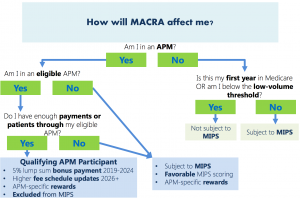In a recent article published on the blog of Harvard Business Review, economist Michael Porter emphasizes that the only solution to improve the health care system in this country is to increase the value of health care, which according to Porter is measured by outcomes achieved for patients relative to the dollar amount spent.
In a recent article published on the blog of Harvard Business Review, economist Michael Porter emphasizes that the only solution to improve the health care system in this country is to increase the value of health care, which according to Porter is measured by outcomes achieved for patients relative to the dollar amount spent. While it has been almost unanimously agreed upon by the health care community that we need to pursue a patient-centered and outcome-based model, reforms for this complex system face significant challenges and may take a long time to complete.
 While many obstacles are deeply rooted in the culture and legacy of the system and there is no quick and easy fix, there are issues we can tackle that may bring meaningful and tangible results in the short-term. Improving communication among providers is one of them.
While many obstacles are deeply rooted in the culture and legacy of the system and there is no quick and easy fix, there are issues we can tackle that may bring meaningful and tangible results in the short-term. Improving communication among providers is one of them.
Communication plays a critical non-clinical role in health care delivery. In the U.S. health care system that is highly specialized and fragmented, improving communication among providers can lead to perceivable impacts on patient outcomes and potential cost reduction.
Treating an episode of disease or managing a chronic condition often requires different specialists work together to deliver care. For example, cancer care may involve oncologist, radiologists, anesthesiologist, surgeon and pathologist. To improve the outcome, theses specialists need to work cohesively as a team. Effective communication between various physicians is a key to achieving the goal. But in reality, the coordination is difficult. Current system does not provide sufficient communication support for members of the care team—it not only makes it difficult for physicians from different institutions to exchange information, but also discourages communication within the same provider organization. The siloed care negatively affects patient outcomes and contributes to increased costs.
Improvement of communication among providers can be made in three areas.
Integrate Communication Functions into Health Care IT System
Significant improvements have been made in the health care IT space but it is still far from perfection. In a recent article, Dr. Adrian Gpropper, CTO of Patient Privacy Rights points out that due to current federal regulations, patient information is segregated from provider information in health care IT, creating barriers for transparency. Meanwhile, the design and integration of health care IT system such as EMR is also fragmented—provider organizations work with different vendors to build encrypted system, making it extremely difficult for inter-organizational communication and sharing of patient information. In addition, as Porter mentioned, highly relevant clinical data are often not recorded by EMR and “much outcome information is buried ‘free text’ fields within clinician notes,” which contributes to a lack of information sharing among physicians from the same provider organization.
These challenges represent several opportunities for the health care IT community.
First, health care IT needs a universal standard to facilitate inter-organizational communication. This may seem difficult in the short-term but in the long-run this will help to increase efficiency and contain cost. Second, improved IT engineering is needed for EMR to highlight relevant clinical data and facilitate physician communication so they can better coordinate clinical procedures throughout the care cycle. Third, a larger discussion about enhancing transparency via communication mechanism in health care IT is necessary for all key parties involved, from regulators, providers, technology companies to patients.
Experiment Internal Communication Mechanism among Providers
Many studies have suggested that by improving communication within an organization, efficiency will also increase. In health care organizations, more efficient and effective communication among providers means better-coordinated care, lower cost and improved patient outcomes. However, in these fragmented enterprises where specialized but siloed unites largely function independently and internal communication is needed the most, very little meaningful efforts have been put into place.
New tools and technologies have been successfully used by organizations in other industries to improve internal communication and demonstrated positive results. Chatter, a web-based internal communication widget developed by Salesforce has been widely used by organizations across industries to boost information sharing, enhancing team performance. Similar tools can be tailored and integrated in a health care or clinical setting to empower providers with shared information, enhancing coordinated care.
Cultivate New Culture among Physicians
Communication skill is one of the basic skills a physician should possess. Interpersonal and Communication Skills is defined by American Board of Medical Specialties as one of the six core competencies for quality patient care for physicians. Although a lot of attention has been given to patient-physician communication, communication between physicians plays an equally, if not more, important role in delivering effective care. Unfortunately, in many provider organizations, there is a lack of incentive for different specialists to speak to each other. This has a lot to do with the current pay-for-service system. When doctors are paid for by the volume of service they provide, they naturally want to perform more procedures than collaborating with someone outside of the unit. A long and painful change of organizational culture is something also needs to be addressed along with the payment reform.
Compared to other highly anticipated reforms in health care organizations, enhancing internal communication requires much less resource. Provider organizations might even be able to test multiple approaches until they find the idea one. The impact of the relatively cheaper change however, may bring highly cost-effective results. Stakeholders such as hospitals, health care IT companies and communication agencies should not overlook the potential opportunities.







